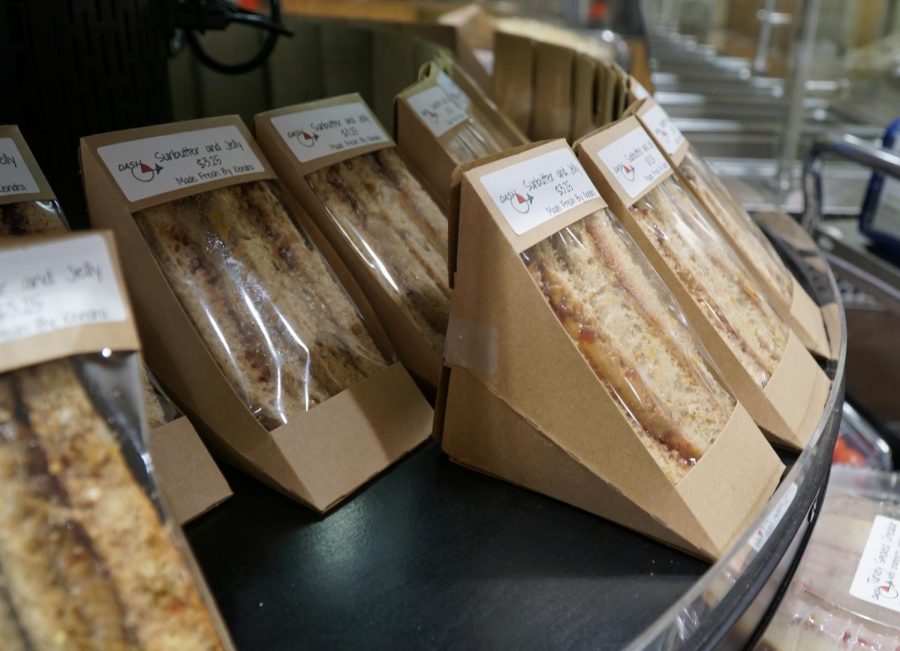Handling of Peanut Allergies at Parker
How Parker Ensures a Safe, Peanut-Free Environment
Photo credit: Isaac Warshaw
The nut-free cafeteria’s sells sunbutter sandwiches.
Halloween is approaching, and students throughout the school will soon walk the hallways in their decorative costumes for the parade. Prior to, or after the parade, classrooms usually hold some sort of meeting time where the students can get some candy or a treat. This can pose a threat to students with peanut allergies because many candy bars contain peanuts.
This year, Parker has ensured that there will be no peanut products brought to school on Halloween to be aware of allergies. “We’re doing everything we can to make a safe environment for all of our students,” 8th grade math teacher Tim O’Connor said.
While this change may have gotten students a bit frustrated, O’Connor saw the positives of it. “I don’t think school is the only place students choose to celebrate Halloween,” O’Connor said. “If you would like to have Reese’s or other peanut based candies, Parker’s campus is not the only place where you could have that. As far as I’m concerned, I don’t think it’s the end of the world not to have peanut products at Parker’s celebration of Halloween.”
An important theory to why allergies have become so prevalent today is because of exposure. “In today’s society, allergies are much more prevalent than when I was growing up,” O’Connor said. “Sometimes it seems like if you don’t introduce a child to a substance, there is more of a chance of them becoming allergic to it.”
O’Connor brought up a point about how it might be more than just lack of exposure as to why kids are developing more allergies. “If you made an overarching statement about all parents…they seem to be more cautious about what they give to their children between the ages of 0-3.” O’Connor said. “I think parents have maybe been overly cautious.”
O’Connor was spot-on with his theory of why there has been such a spike in child allergies in recent years. “A study conducted by the American academy of pediatrics in 2000 found that it was better to wait to introduce foods such as peanuts until they are three years old,” Food allergy specialist and Parker parent, Dr. Ruchi Gupta said. “There was a follow up study done in 2008 that showed no supporting data of the study conducted in 2000. Many parents simply are not aware that they should actually be introducing their children to a diverse diet especially as both the immune system, and the gut biome are still in their developmental stages from age zero to three.”
Overly cautious parents may not be the only thing to blame for the rise in child allergies. There are other theories that also show promise as the cause of the allergies among children. “Another prominent theory is that the widespread use of antibiotics can be causing child allergies,” Gupta said. “Antibiotics kill both the good and the bad bacteria so in situations when pregnant women take them, their child can be born with less biodiversity in their gut biome, which could lead to more allergies.”
When asked about the way Parker treats nut allergies surrounding times where candy is being eaten throughout the school, like Halloween, Gupta was confident that Parker is doing the right thing. “Nut allergies are very widespread among the U.S. about 2% of the population has some kind of nut allergy. So it is very important that all people with allergies are safe, and that the school is accomodating for them,” Gupta said.
Someone like Bodie Florsheim, who has been at Parker for 12 years, has gone through all of the birthday celebrations in the early grades at school being very cautious. “I would ask people to wash their hands after eating something with peanuts,” Florsheim said. “I felt like I was a respected human being when others became more cautious about eating peanuts. Having a peanut allergy always set me back a little bit.”









